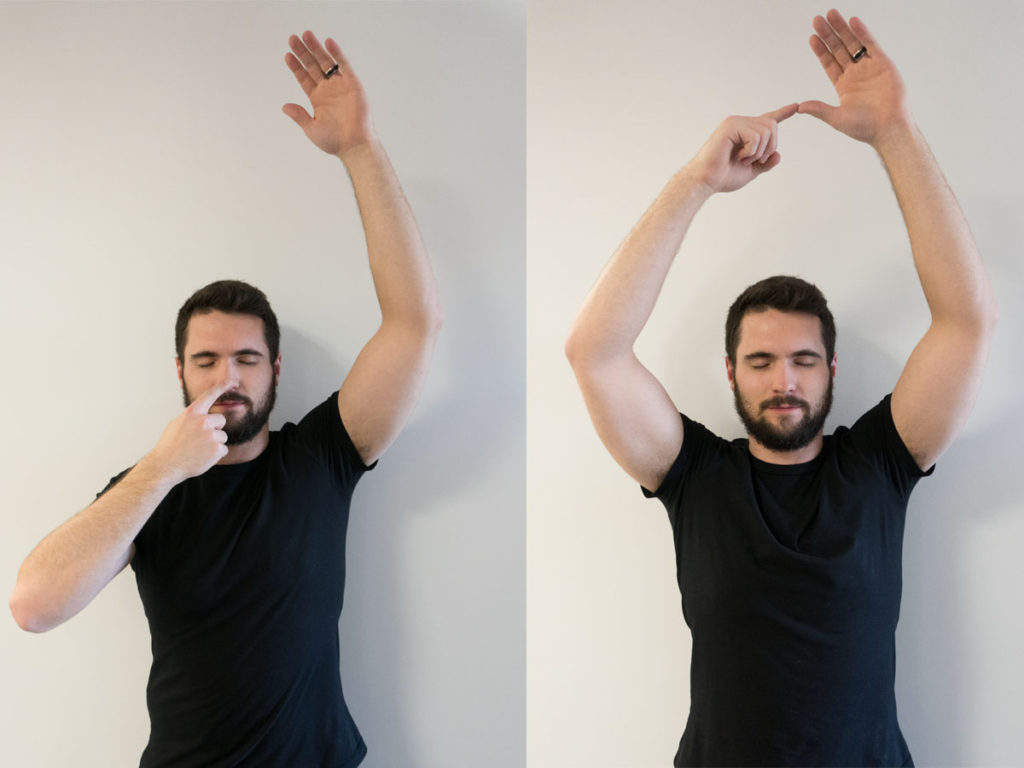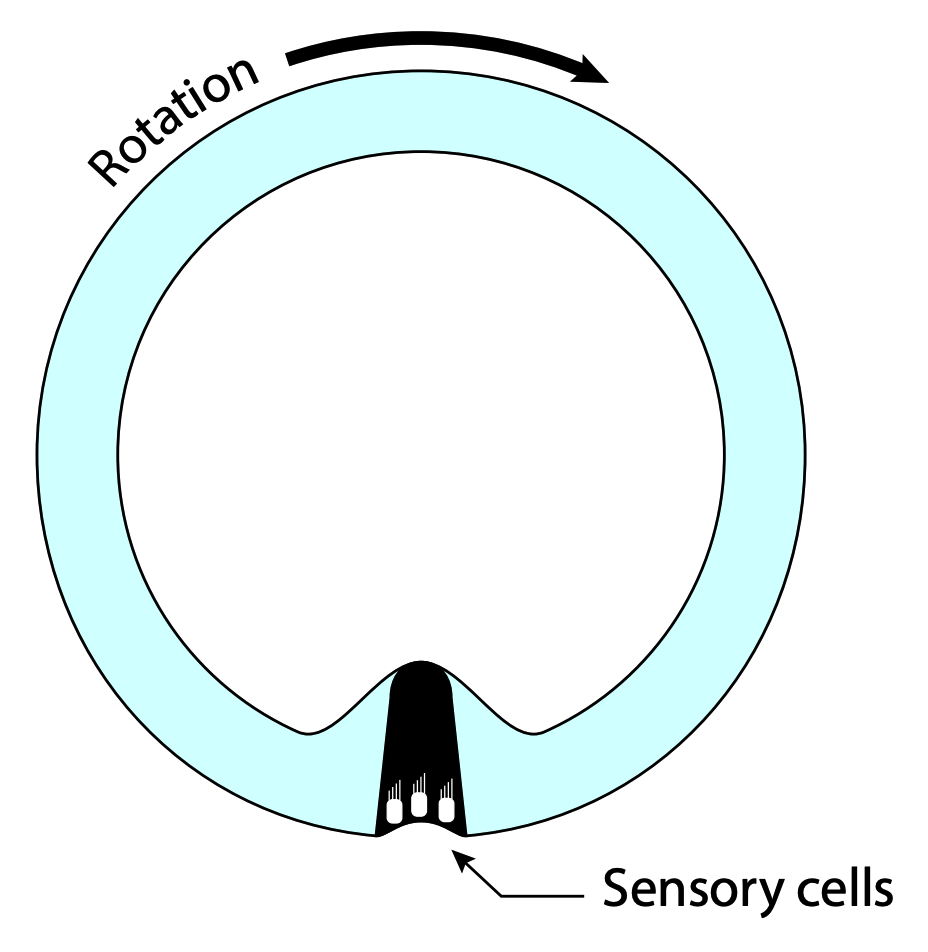Proprioception (Pro-pree-oh-SEP-shun) refers to awareness of the position and movement of them body with respect to the external environment. The proprioception system helps us keep track of where all of our body parts are relative to each other, and how the body is oriented relative to gravity. It gathers input not only from the vestibular system in the inner ear, but also from the eyes, and from stretch and pressure receptors in the skin, muscles, and joints.
Proprioception and Vision
These experiments will demonstrate how vision can help to fine-tune proprioception, making it a little more accurate.
Experiment 1:
- While sitting down in a chair with a back:
- Close your eyes and lean back.
- Try to touch your nose with your right index finger.
- Repeat with your left index finger.
- Open your eyes and try again.
Questions:
- What did you observe while carrying out this activity?
- Could you tell a difference between your performance with your eyes open and your eyes closed?
- How would you explain this based on the function of this sensory system?
Experiment 2:

- Close your eyes and raise your arms over your head.
- Keep your left hand totally still with fingers spread out.
- With the index finger of your right hand, quickly touch your nose then touch the tip of your left thumb
- Now, moving quickly, repeat the entire process for each finger
- touch your nose, touch your index finger
- touch your nose, touch your middle finger, etc.
- Switch hands and try again.
- Wiggle your fingers and try again.
Follow-up Questions
What did you observe while carrying out this activity?
What do you learn from this experiment?
Semicircular Canal Demonstration
- Place a small square (2 cm x 2 cm) of paper, or another object that floats, in a cup of water. The cup represents the semicircular canal (in this case, the horizontal canal) and the water represents the fluid inside it. The paper is a marker that travels with the water.
- Hold the cup firmly. Watch the paper marker as you rotate your body in a full circle to the left.
- Repeat, rotating your body in a full circle to the right.
Follow-up Questions
Does the fluid move in the same direction as the cup, the opposite direction, or not at all?

In the drawing at right, imagine that you’re rotating the semicircular canal clockwise (in the direction of the arrow). In what direction, if any, will the fluid inside the canal push on the sensory cells?
How does this fluid movement related to proprioception?
Adapted from activities by learn.genetics.utah.edu